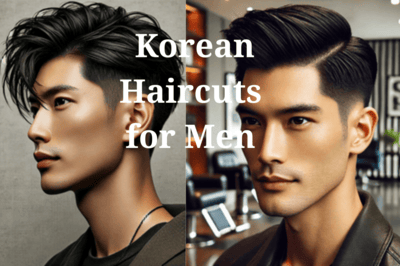
InShower Style Cream
Include an in-shower styling lotion into your daily schedule for elegantly defined waves with little effort. This lowweight solution gives flexible length and lets you preserve your waves free of stiffness while improving your natural texture.
Perfect for wet hair, it seals in moisture and reduces frizz, offering a straight base for styling. It’s also ideal for a little amount of effort to freshen second-day waves. Seek formulas, including aloe or coconut water, that provide nourishing elements to help your hair remain moisturized.
Your hair should be airdried a couple times, twisted around, and let to dry naturally to produce a gentle, beachy texture.
Curl Repairing Bond Salve
With a curl fixing bond ointment, restore energy to your waves. Strengthening weakened hair bonds, this intensive therapy treats heat, chemicals, and environmental damage. Full of natural oils and proteins, it profoundly conditions and increases flexibility to stop damage.
Regular use brings luster and bounce back to limp curls. Apply to clean, damp hair from mid-lengths to ends and run to allow maximum repair. Essential for retaining your curls soft and strong, it’s perfect for every wavy hair type.
Comprehension Wavy Hair
Offering natural volume but demanding extra attention, wavy hair gives the best of both straight and curly styles. The Sshape of it can vary from loose beachy waves (2A) to denser coils that are more closely defined (2C).
Common issues are frizz management, moisture retention, and keeping the hair free of weight. Regular trims stop split ends; light, moisturizing products serve to improve wave clarity. Plopping, diffusing, and other style techniques can help one to get the most bounce.
Knowing your particular wave type guarantees you select the right goods—that is to say, sometimes you want extra hold, extra moisture, or maybe light washing. Celebrate your original texture and go for goods that show its simple elegance.
Hair Type 2A: Waves Soft, Free floating
Usually beginning around the mid-lengths, type 2A hair has soft, loose waves with a light " S; shape. Particularly when dragged down by heavy items, this sensitive, fine texture can lose definition quickly.
Choose light sea salt sprays or texturizing mists that elevate the waves without adding stiffness to keep volume. Avoid overconditioning, which might flatten the waves—select volumizing shampoos and allow your hair to air dry as much as possible.
Scrunch wet hair with a microfiber cloth for additional lift, then let it dry naturally. Ideal for a laidback, unkempt image, Type 2A waves flourish with little product and utmost simplicity.
Hair Type 2B: Defined Waves with Organic Frizz
With a combination of textures and some frizz, Type 2B hair is defined by more obvious “S” waves. Beginning closer to the roots, these waves can become shapeless if not styled properly. While managing frizz, a hydrating mousse or foam can define hair.
For a beachy texture, apply a wave-enhancing cream to damp hair, scrunch, and blow-dry. Trying to keep wave clusters fingercombing is preferable to dry hair brushing.
Keeping the bounce intact, lightweight leave-in conditioners help to stop brittle issues. Type 2B hair attains naturally elegant, lived-in waves with the perfect mix of moisture and hold.
Type 2C hair: frizzy, thick-volume waves
2C hair has thick, full waves with intense “S” forms and a frizzy tendency. Starting at the root, these waves need more moisture and direction to stop puffiness. Using the " praying hands" technique, then scrunch for definition, a curl-defining cream or gel will help control frizz while improving shape.
Diffusing on low heat helps lock in texture without disturbing the wave pattern. Regular protein masks and deep conditioning sessions help to fortify the hair and decrease splitting.
To keep curls intact overnight, pineappleing—loosely tying your hair up—would help. Type 2C hair offers dramatic volume and texture with a natural glamour appearance when correctly handled.
Method for Washing Wavy Hair
Use a sulfate free shampoo; it gently cleans without stripping your hair of its natural oils.
Condition with a hydrating formula—Apply mostly to the midlengths and ends to help frizzy hair and dryness.
This helps stop breakage when your hair is wet with conditioner if you run your fingers through or use a wide tooth comb.
Rinse with cool water—this keeps the hair cuticle closed, hence giving your waves more gloss and smoothness.
Best Ideas for Styling Wave Hair:
On damp hair, use a wave enhancing product; this increases wave definition and strength.
A diffuser on low warmth aids improve your natural waves without causing frizz.
Elevate the roots and boost volume by scrunching mousse or foam.
For sophisticated, bouncy curls when you want a more refined look, try a round brush blowout.
How exactly wavy hair should be defended throughout washes:
Sleep every night on a silk/satin pillow case; this keeps you from tangle and lowers rubbing.
Apply dry shampoo at the roots; it adds texture and absorbs extra oil for revitalized hair.
Restores your waves without adding weight without sea or texturizing spray.
How to Style Wavy Hair: Easy Tips for Effortless Waves
Understanding the Struggles of Wavy Hair

Coping with Wavy, Thick Hair?
Thick, coarse hair can certainly be heavy and difficult to style. By offering a lighter, more defined appearance, a layered haircut cuts down volume and brings out your natural waves.
Beating Frizz in Humid Weather
Though humidity can create frizz, using a smoothing spray before styling will assist in keeping your curls smooth and polished all through the day.
Hair Care Errors to Avoid
Frequent washing and strong chemicals may rob your hair of its natural moisture and, therefore, cause dryness. Choose hydrating, mild goods to maintain your waves healthy and brilliant.
Essential Hair Care for Wavy Hair
Shampoo and Conditioning
Use a moisture-rich shampoo followed by a hydrating conditioner to enhance wave patterns.
Deep Conditioning and Masks
A weekly deep conditioning mask restores hydration and improves wave definition.
Pre-Styling Tips for Wavy Hair
- Apply a leave-in conditioner for moisture
- Use a heat protectant before heat styling
Unlocking the Potential of Your Waves
Air-Drying for Natural Waves
Let hair dry naturally for soft, defined waves. Scrunch in a texturizing spray for extra texture.Using a Diffuser
Attach a diffuser to your hairdryer and dry on a low setting to maintain natural waves.
Heat Styling Tools
Use a flat iron or curling wand for loose curls or flat iron waves.
Twisting and Braiding Techniques
- Braid damp hair overnight for braid waves
- Twist sections and pin for soft, natural curls
- Pin Curls and Bantu Knots
Pin curls and Bantu knots create voluminous, long-lasting waves.
Top Styling Products for Wavy Hair
Hydration and Frizz Management
Without weighing hair down, a lightweight leave-in conditioner helps retain moisture, smooth frizz, and improve natural wave definition.
Ideally suited for everyday use, it ensures that hair is soft, easy to style, and shielded from environmental damage.
Sea salt sprays & texturizer
Ideal for enhancing natural waves, these sprays give volume, texture, and a tousled lived-in appearance. Their gentle grip and grit give a carefree, beachy feel, preserving your look pristine all day.
Defined, weight-free waves with styling creams and mousses.
Mousses and creams give soft hold and help wave styles, thereby lowering puffiness. They style hair with flexibility; some have bouncy, defined curls that sit light and buoyant all day.
For styled looks, use strong hold from gels and pomates.
Gels provide a solid, long-lasting grip for more defined waves, whereas pomades offer natural finished control. Both without flaking or crunch help to define and mold waves.
Protectants for heat: Subdue hair from styling damage
Before blowdrying or using hot equipment, heat protectants are necessary. Stopping damage, dryness, and split ends, while also keeping your waves smooth and healthy, a protective barrier against high temperatures forms.
Everyday Hairstyles for Wavy Hair
Loose Waves is casual daily sophistication.
Daily wear calls for a relaxed, natural texture ideal. Obtain this appearance by using a light curl-enhancing lotion on damp hair and softly scrunching or twisting sections as it dries by itself. If you want more definition, use a diffuser on a low temperature setting.
The outcome is a laidback, touchable wavy pattern that gives simple elegance without appearing overdone.
A Textured, Beach Waves
Start with a sea salt spray on damp or dry hair for a windswept, beachy effect. Use your hands to scrunch your hair up to promote texture, then let it air dry or with a diffuser for more volume.
Perfect for a carefree, sunkissed appearance, the salt spray improves natural waves and gives a mild, tousled grip.
Braided Styles
Creating clearly defined, long-lasting waves, braids provide a heat-free alternative. Apply a soft styling mousse to wet hair before bedtime, then braid it into loose units (French braids, Dutch braid, or simple plaits).
Unbraid the hair and fingercomb it in the morning for soft, bouncy waves with organic texture—no heat required.
FAQs
1. How might one best define wavy hair?
A wave enhancer enables natural texture to shine since it provides definer cream.
2. Will a flat iron help me style wavy hair?
For a tidy look, you could have loose curls or flat iron waves.
3. How might one best safeguard wavy hair overnight?
Use a loose braid to keep waves and sleep on a silk sheet.
conclusion
Styling wavy hair is all about developing your natural texture while maintaining the health of your strands. Begin by using leave-in conditioners to avoid frizz, then pick styling products that work for your preferred look—creams for definition, sea salt sprays for texture, or gels for hold.
Though heat tools help your waves, always apply a protectant to prevent harm. Low-maintenance styles should be accepted, including airdrying or braiding.
The secret is to know your hair&’s particular pattern and collaborate with it, not fight against it. Your waves will always appear polished, full, and vivacious with the right tools and methods.


